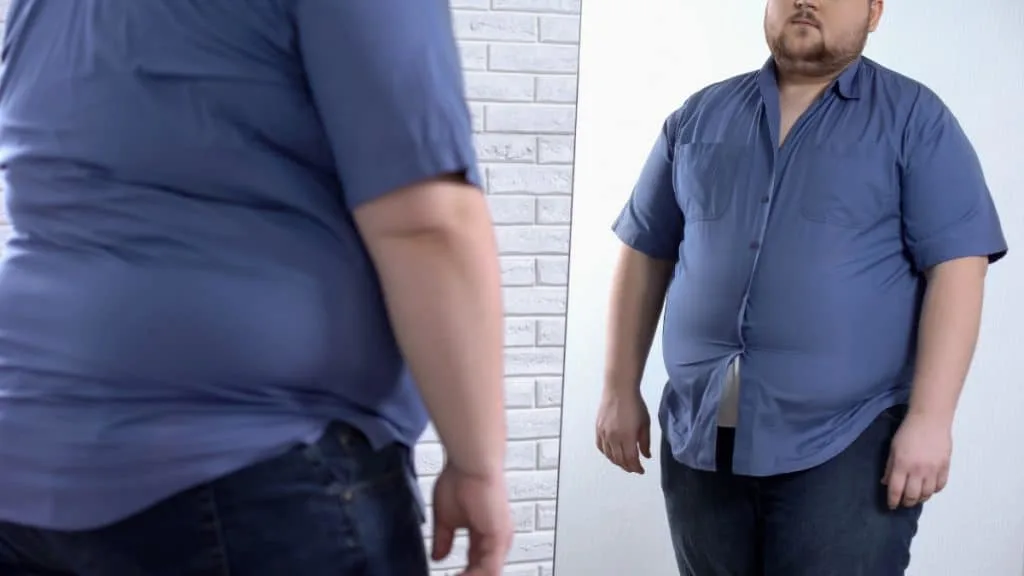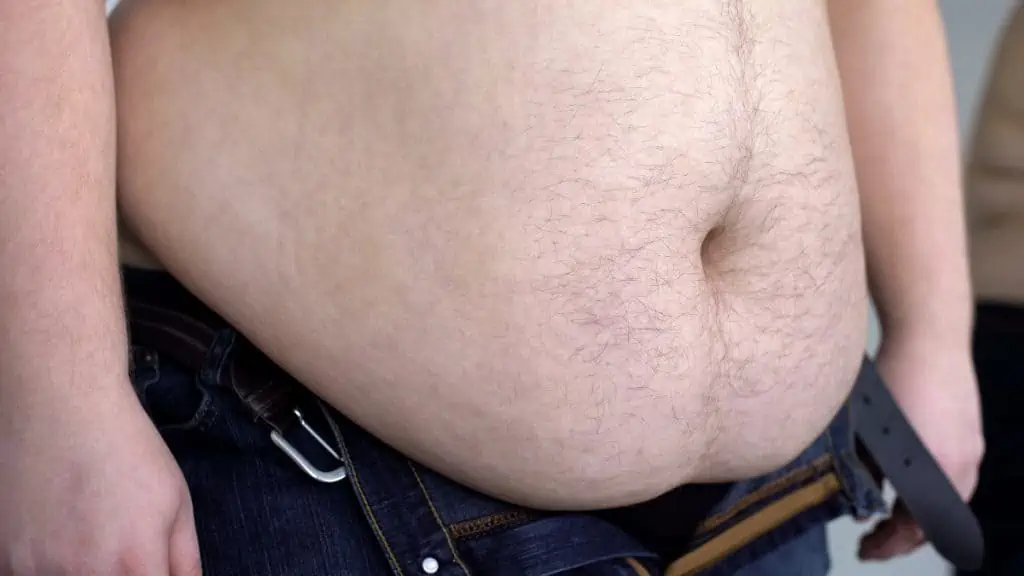As you can see on our healthy waist size chart (we have multiple of them), neither a 68 inch waist nor a 69 inch waist is considered slim.
This is problematic for your physical health because storing excess body fat on your stomach can lead to conditions like type 2 diabetes and heart disease.
See below for additional articles on similar waist sizes, or keep reading for advice on slimming your 68″ waist or 69″ waist.
What are the dangers of having a 68 inch waist and a 69 inch waist?

If you have a 68 inch waist or a 69 inch waist, then you’re likely to have dangerous levels of visceral fat within your body.
Yet, I said within your body.
Unlike subcutaneous fat, which is the fat that you can grab with your hands, visceral fat is intra-abdominal and can wrap around your internal organs, causing their function to become impaired. Some research even shows that visceral fat can reduce the strength of your bones. [1]
Having a 68 inch waistline, since it’s so much bigger than normal, can also increase your risk of metabolic diseases, [2] which can reduce your lifespan and quality of life.
How can you slim your 68 inch waist?

Consume fewer calories than your body needs to maintain its weight. It sounds simple, but when you put your body in an energy deficit—which you can also do by expending energy via exercise—your body has no choice but to decrease in mass.
Of course, certain people might have a better tolerance for fats or carbs, depending on their genetics. But these variables, while interesting to learn about, can often detract from the more important weight loss fundamentals.
Wait until you’ve lost a substantial amount of weight before you worry about optimizing every aspect of your diet and exercise regime.
For example, you’re much better off going for walks every day than doing one really intense workout on the weekend. In other words, consistency is more important than intensity when it comes to reducing the size of your stomach.
If you have some dumbbells or bands, then you can get a great workout without going to the gym. You can even start off by exercising while sitting down if you like. But eventually, you’ll want to work out while standing, as standing up activates more muscles and thus burns more calories.
What are the benefits of reducing your 68″ waist and 69″ waist?

Slimming your 68 in waist or 69 in waist can feel like climbing a mountain at times. That’s why it’s so vital to set small, realistic goals that you have a high chance of achieving.
For example, even losing just 5% of your body weight can cut your risk of cancer and diabetes and also take the stress off your joints (which will make your daily life more comfortable). [3]
Lowering your weight will also give you more energy, which in turn will give you more enthusiasm to complete your workouts, which will then enable you to train harder and create a greater calorie burn (you can see how creating positive habits really compounds over time).
Also, one thing that few people talk about is mental health. It’s well-documented that many obese individuals struggle with anxiety and depression, so when you see changes in your body and receive a dopamine boost from exercise, don’t be surprised if your general mood becomes more positive.
In conclusion

When it comes to losing weight from your 68 inch waist or 69 inch waist, the most important thing is that you just get started. When you form healthy habits, it’s much easier to stay consistent.
So start by walking more, cutting out calorie-dense junk foods from your diet, and trying different types of exercise that you find enjoyable.
If your waist gets smaller over the weeks and months, then you know that your exercise routine and diet are working. Consistent fat loss is more desirable than rapid weight loss in many cases because it’s more sustainable.
That said, some obese individuals can benefit from going on a very low-calorie diet to shift an initial bulk of weight, which can get you some quick wins, improve your health, and enable you to move your body with greater ease (which will open up new workout possibilities to further your weight loss progress).
References
- Gilsanz, V., Chalfant, J., Mo, A. O., Lee, D. C., Dorey, F. J., & Mittelman, S. D. (2010). Reciprocal Relations of Subcutaneous and Visceral Fat to Bone Structure and Strength. Obstetrical & Gynecological Survey, 65(2), 103–104. https://doi.org/10.1097/01.ogx.0000368150.56502.80
- Lumeng, C. N., & Saltiel, A. R. (2011). Inflammatory links between obesity and metabolic disease. Journal of Clinical Investigation, 121(6), 2111–2117. https://doi.org/10.1172/jci57132
- DerSarkissian, C. (2020, November 2). What a 5% Weight Loss Can Do for Your Health. WebMD. https://www.webmd.com/diet/ss/slideshow-five-percent-weight-loss

